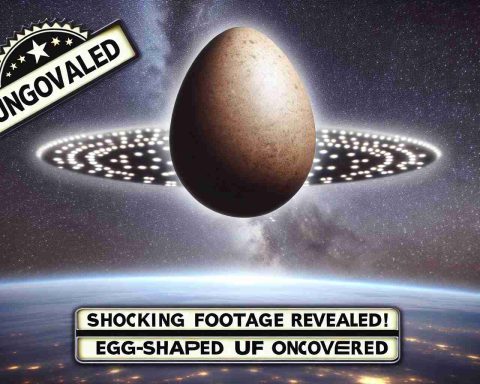Scientists Make Groundbreaking Discovery About the Moon’s Origin
Recent research has overturned long-held beliefs regarding the Moon’s formation, revealing a surprising connection to Earth itself. Contrary to the established theory that a colossal impact from an ancient planet, Theia, created our satellite, new findings suggest the Moon is predominantly composed of material from the Earth’s own mantle.
Researchers from the University of Göttingen in Germany conducted an in-depth comparison of moon and Earth rock samples. Their analysis indicated striking similarities, leading them to conclude that the Moon was primarily formed from molten material ejected during the collision. This new perspective posits that when Theia collided with early Earth, it may have stripped away its own rocky mantle, colliding with Earth like a “metallic cannonball.”
This transformative event resulted in the ejection of Earth’s mantle material, which ultimately coalesced to form the Moon. Professor Andreas Pack, a lead researcher on the study, suggested that this would explain the close compositional relationship between the Earth and its lunar companion.
Additionally, these findings challenge existing theories regarding the timeline of water’s arrival on Earth, implying that Earth’s hydrosphere may have formed differently than previously thought. As this groundbreaking research continues to unfold, it may provide fresh insights into our planetary history and the origins of our closest celestial neighbor.
The Broader Implications of the Moon’s Revised Origin Story
The recent revelation about the Moon’s formation alters not just our understanding of celestial mechanics but also has wide-reaching implications for society and culture. As our grasp of humanity’s relationship with the cosmos deepens, public interest in space exploration and science may grow, leading to a surge in funding and resources allocated for lunar missions. This shift could catalyze innovative technologies and inspire a new generation of scientists and engineers, igniting further advancements in our quest for knowledge beyond Earth.
Moreover, these findings may influence international collaboration in space research. Countries that previously focused solely on terrestrial geology may begin to prioritize lunar studies, potentially resulting in a shared global agenda for space exploration. This collaboration could foster cultural exchanges, as nations work together to unlock the secrets of our solar system.
On an environmental level, understanding the Moon’s origin can help us contemplate the future of resource utilization in space. As humanity looks toward asteroids and other celestial bodies for mining opportunities, knowing the processes and materials involved in planetary formation could inform sustainable practices.
In the long term, this research may reshape our philosophical perspective on the Earth-Moon system, prompting us to reevaluate our connectedness not just with each other but with our solar system at large, cultivating a deeper appreciation for the intertwined fates of our celestial bodies.
Revolutionary Insights Into the Moon’s Formation Challenge Long-Held Beliefs
A New Understanding of the Moon’s Origin
Recent studies have reshaped our understanding of the Moon’s formation, presenting a compelling case for a deep connection between our planet and its lunar companion. Historically, the prevailing theory suggested that a massive collision with a planetary body named Theia resulted in the creation of the Moon. However, recent research from the University of Göttingen in Germany indicates that the Moon is primarily made up of material from the Earth’s mantle rather than solely from Theia.
Key Findings
The researchers conducted meticulous analyses comparing rock samples from both the Earth and the Moon. Their results revealed significant compositional similarities, which led them to propose a revised theory: when Theia collided with the young Earth, it likely stripped away a portion of Earth’s rocky mantle. This ejected material then coalesced to form the Moon.
Professor Andreas Pack, one of the leading authors of the study, highlighted that this theory not only explains the close compositional relationship between the Earth and the Moon but also revolutionizes our understanding of planetary formation processes.
Implications for Earth’s Water History
Additionally, this groundbreaking discovery has implications for the history of water on Earth. Previously held beliefs suggested that Earth’s water arrived later in its history, perhaps via comets or asteroids. With the new evidence indicating a different formation process, researchers are reevaluating how and when water may have formed within Earth’s hydrosphere.
How This Affects Current Understanding
These new insights are part of a broader trend in planetary science seeking to explain the origins and dynamics of celestial bodies within our solar system. Researchers are now considering alternative scenarios of planetary formation and evolution that could account for the close relationship between Earth and the Moon.
Pros and Cons of the New Theory
Pros:
– Provides a clearer explanation of the lunar composition.
– Challenges and refines existing models of planetary collisions and formations.
– Offers new insights into the history of water on Earth.
Cons:
– Contradicts long-accepted theories, which may lead to resistance within the scientific community.
– Requires further research to fully validate the new model and its implications.
Future Directions
As research in this area progresses, scientists anticipate that these findings will not only enhance our understanding of the Earth-Moon system but also influence theories regarding other celestial bodies in the solar system. This paradigm shift may encourage more exploration into the formation processes of other moons and planets.
In conclusion, the collaboration between geology and planetary science is paving the way for a better understanding of the origins of the Moon and the Earth. This fresh perspective holds the potential to transform our knowledge of the solar system and inspire new questions about the fundamental nature of planetary evolution.
For more details on this research and similar discoveries, visit NASA.



















